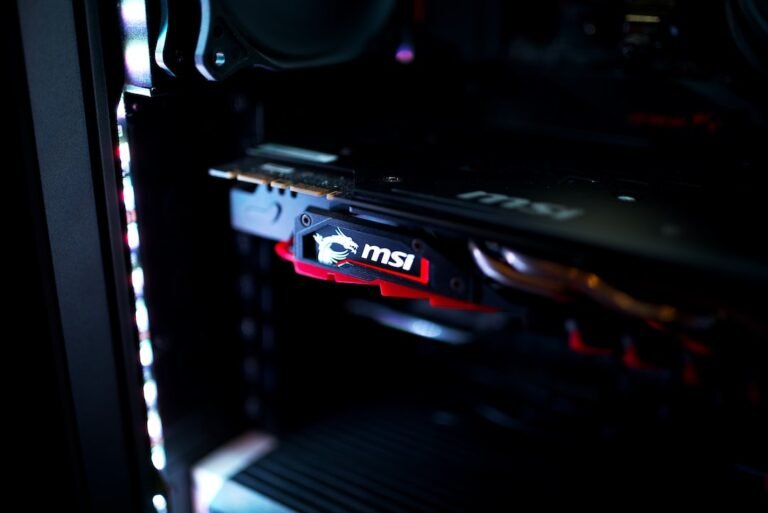Introduction
Have you ever thought about how much energy your home network consumes on a daily basis? From routers to modems to smart devices, our connected homes are constantly drawing power. But what if we could make our home networks more energy efficient and eco-friendly?
In this article, we will explore sustainable practices for setting up and maintaining energy-efficient home networks. We’ll discuss the benefits of eco-friendly network setups, offer practical tips to reduce energy consumption, and introduce innovative technologies that can help you create a more sustainable home network. Let’s dive in!
The Benefits of Energy Efficient Home Networks
Before we explore the practical steps to create an eco-friendly home network, let’s take a moment to understand why it’s important to prioritize energy efficiency in our digital lives.
Reducing Energy Consumption
Home networks are responsible for a significant portion of household energy consumption. By adopting energy-efficient practices, such as optimizing device settings and utilizing smart power management tools, we can significantly reduce our carbon footprint and lower our electricity bills.
Environmental Impact
The energy needed to power our home networks often comes from non-renewable sources, such as coal or natural gas. By minimizing energy consumption, we can contribute to the overall reduction of greenhouse gas emissions and help combat climate change.
Long-Term Savings
In addition to the environmental benefits, energy-efficient home networks can lead to long-term savings. By optimizing our network setups, we can reduce our electricity bills and save money over time.
Tips for Energy Efficient Home Networks
Now that we understand the importance of energy efficiency, let’s explore some practical tips to make our home networks more eco-friendly and sustainable. By implementing these strategies, you can reduce energy consumption without sacrificing the performance of your network.
Energy Efficient Devices
Start by choosing energy-efficient devices for your home network. Look for routers, modems, and other network equipment that have Energy Star certification. These devices are designed to consume less power without compromising performance.
Optimize Device Settings
Many network devices come with energy-saving features that are often disabled by default. Take a few minutes to review the settings of your router, modem, and other network devices. Enable power-saving options like sleep mode and automatic shutdown when devices are not in use.
Smart Power Management
Invest in smart power strips or smart plugs that allow you to set schedules or turn off outlets remotely. These devices can automatically turn off power to connected devices during hours when they are not needed, saving energy and reducing standby power consumption.
Wireless Router Placement
Properly placing your wireless router can make a significant difference in energy consumption and signal strength. Avoid placing your router in enclosed spaces or near walls and furniture that can obstruct the signal. Optimize router placement for maximum coverage and efficiency.
Update Firmware Regularly
Manufacturers often release firmware updates for routers and other network devices to improve performance and address security vulnerabilities. By regularly updating your device’s firmware, you can ensure optimal efficiency and security for your home network.
Use Mesh Wi-Fi Systems
Mesh Wi-Fi systems are a great solution for optimizing network coverage in larger homes. Instead of relying on a single device to cover the entire space, mesh systems consist of multiple access points that work together to provide seamless coverage while ensuring efficient energy distribution.
5G Routers for High-Speed Connectivity
Consider upgrading to a 5G router for high-speed internet connectivity. 5G routers are not only faster but also more energy-efficient compared to older generations. They can handle high data traffic while consuming less power, making them a sustainable option for home networks.
Parental Control Routers
Investing in a router with built-in parental control features can help you manage and limit internet usage for your family members. By setting time limits and monitoring data usage, you can encourage responsible online behavior while reducing unnecessary energy consumption.
Open-Source Router Firmware
For tech-savvy users, installing open-source router firmware like OpenWrt or DD-WRT can provide more control over network settings and enable advanced energy-saving features. These firmware options allow you to customize your router’s operation for optimal efficiency.
VPN Router Security
Using a VPN (Virtual Private Network) router can enhance online privacy and security while also reducing energy consumption. VPN routers encrypt internet traffic, protecting your data and reducing the need for additional security measures that may consume more power.
Smart Home Integration
Integrating your home network with smart home devices can streamline energy consumption. By setting up automated routines, you can control the powering on and off of smart devices based on occupancy or specific time schedules, reducing unnecessary energy usage.
Fiber Internet Routers
Consider upgrading to a fiber internet router if it is available in your area. Fiber internet offers high-speed connectivity while consuming less power compared to traditional copper-based connections. This makes fiber routers an energy-efficient choice for your home network.
Conclusion
Creating a sustainable home network is not only good for the environment but also beneficial for your electricity bills. By implementing energy-efficient practices and adopting eco-friendly technologies, you can reduce your carbon footprint and contribute to a greener future.
Remember, small changes can make a big difference. From optimizing device settings to upgrading to energy-efficient equipment, every step towards a more sustainable home network matters. So, why not start today and join the movement towards energy efficiency in our digital lives?
FAQ
How do I set up a home network?
Setting up a home network can be done by following a few simple steps:
- Connect your modem to your internet service provider’s (ISP) network.
- Connect your router to the modem using an Ethernet cable.
- Power on the modem, router, and connected devices.
- Configure your router’s settings using the manufacturer’s instructions.
- Connect your devices to the network wirelessly or via Ethernet cables.
For a more detailed guide, check out our article on home network setup.
What should I do if I’m experiencing router issues?
If you’re experiencing issues with your router, try the following troubleshooting steps:
- Restart your router and modem.
- Check the physical connections and cables.
- Update your router’s firmware.
- Reset your router to factory settings.
- Contact your ISP or router manufacturer for further assistance.
For more in-depth troubleshooting tips, visit our guide on router troubleshooting.
What are some additional practices for sustainable home networks?
In addition to the tips mentioned in this article, here are some extra practices for sustainable home networks:
- Embrace smart home automation to optimize energy usage.
- Consider using open-source router firmware for more control over network settings.
- Use a VPN router for enhanced online security with reduced power consumption.
By integrating these practices into your home network setup, you’ll be on your way to a truly sustainable and eco-friendly digital lifestyle.
Further Reading
| Title | Website |
|---|---|
| Home Network Setup | Website 1 |
| Wireless Router Security | Website 2 |
| Gaming Router Buying Guide | Website 3 |
| Router Troubleshooting | Website 4 |
| Mesh Wi-Fi Systems | Website 5 |
| 5G Routers for High-Speed Internet Connectivity | Website 6 |
| Parental Control Routers | Website 7 |
| Open-Source Router Firmware | Website 8 |
| VPN Router Security | Website 9 |
| Smart Home Integration | Website 10 |
| Fiber Internet Routers | Website 11 |




